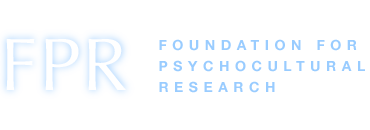The CMB network met on Friday, December 3, to discuss methods; the discussion was led by neuroscientists Hakwan Lau and Shinobu Kitayama. Click on the URL in the top left corner to watch the videos in Vimeo. The password is: Thialh02*
RESEARCH IN “THE NEW NORMAL”
- Technology can be utilized to conduct research safely and remotely, e.g., via Zoom videoconferencing software, portable and inexpensive EEG headsets for contactless acquisition of brain data, publicly available big data sets (e.g., Johns Hopkins coronavirus data), and web-based surveys, incorporating new methods of analysis (Shinobu).
- The nature of these studies can limit generalizability and researcher’s experimental control of the study’s context and data validity.
- The types of information collected with this technology is not a substitute for information collected from in-depth research.
There are limitations and reproducibility problems with big data.
- Big data is an important resource, but often does not include important variables such as sociodemographics (age, gender, race, sexual orientation), poverty, and education, i.e., missed opportunities.
- Publicly and often well-funded data (of various sizes) should be shared, but that doesn’t always happen.
- Some detective work is sometimes needed to link seemingly unrelated databases. This requires connecting with people who have the data and digging into data to uncover commonalities between datasets.
- Big data were collected for a purpose, which may not reflect the purposes of secondary analysis researchers. This requires a different mindset in developing research questions that can be answerable.
- A caution is that big data can be biased and analyses from big data can add to the scientific nonreproducibility problem.
- Learning about a big dataset requires significant investment in time and labor.
Data from neuroscience and the social sciences can be linkable.
- One way is to ask a neuroscientist to add a questionnaire to their study.
- Agreement from neuroimaging center heads to collect sociodemographic data (or their proxies), for example, as part of the process creates common linkages with social science, which routinely collects these data.
- Secure an agreement from neuroscientists to access structural brain scan data, which are usually thrown away. These data are cheap but useful for social and cultural neurosciences.
- A caution is that neuroscience data are fraught with biases (e.g., collected from WEIRD populations), which can marginalize populations, limiting its value for social sciences.
Creating standards of proper methodology for the greater scientific and scholarly community would help to address issues of shared neuro- and social scientific and policy concern.
- A working group within the FPR CMB Network could be formed to write an editorial paper describing standards of proper methodology and key variables or indicators that should be included in studies (e.g., sociodemographics) for the greater social good.
- A neuroscientist should lead this editorial paper.

